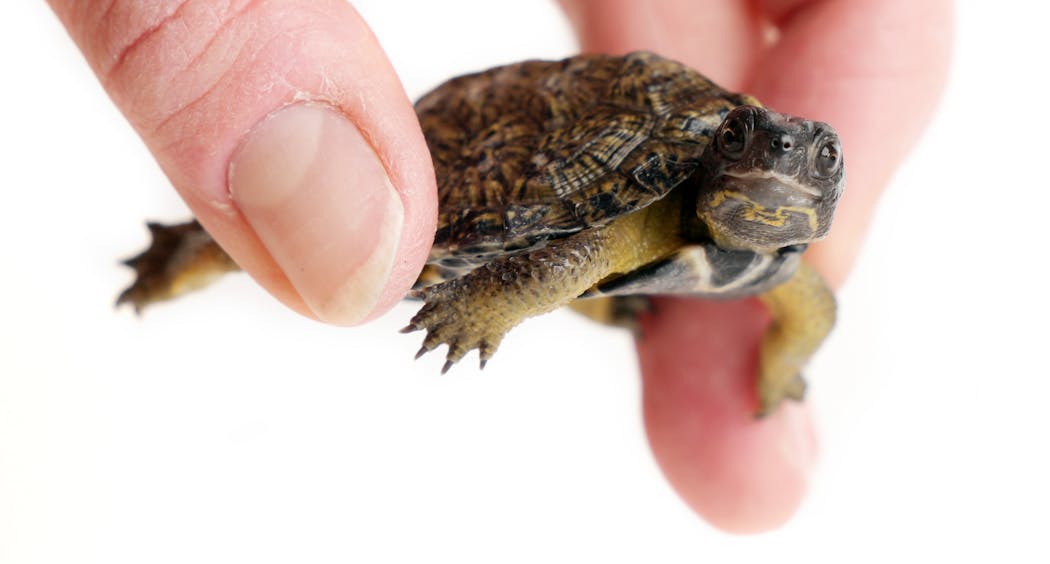Spotting a turtle sunning on a log is one sure sign that summer's underway. From the common painted to the hefty snapper, about 10 species of freshwater turtles make their home in Minnesota's many lakes. June is one of their busiest times as mature females leave the water in search of higher ground to make nests and lay eggs.
That means the start of summer is a dangerous time for turtles. Their travels bring them onto roads and highways, and naturalists are seeing a rise in casualties because of it.
Even a single death of a mature female can have a noticeable impact on the population, says naturalist Jim Gilbert. Turtles can take more than 10 years to reach maturity and start laying eggs. When they do, they lay many at once — snappers can lay up to 40. Some species leave their eggs out in the open for maximum sun exposure, which is needed for incubation, meaning many are lost to predators such as raccoons.
This all spells trouble for turtles. Two Minnesota-native species are currently considered endangered: the wood turtle and the Blanding's turtle.
There's hope in conservation efforts by entities such as the Minnesota Zoo, which finds and hatches eggs in captivity to allow turtles to grow to maturity before releasing them into the wild. The zoo uses GPS to track released turtles and locate popular nesting areas, which it may protect with fencing.
Turtles also serve an important ecological role in their native wetlands, consuming dead plants, fish and insects before they decay and spread harmful bacteria through the water. Minnesotans can help turtle conservation efforts in a few ways:
Help turtles cross the street. Make sure there is no oncoming traffic, then lift the turtle and deposit it safely on the side of the road in the direction it was already moving. Snapping turtles are heavier and are likely to try to bite fingers that get within range of their long necks, so instead of carrying them, lift them from behind and "wheelbarrow" them to their destination. Move them only as far as they need to be out of danger — lingering will cause them undue stress.
Keep an eye out for exposed nests. Lightly spray nearby soil with a scented bug spray to deter raccoons. To further deter scavenging predators, clear the area of litter such as soda bottles or fast food wrappers.
Keep play at bay. Keep pets and rambunctious kids from playing near nests or bodies of water where turtles may be gathering during mating season.
Watch for babies: Come September, be on the lookout for newly-hatched turtles moving from nesting areas to water.

The 5 best things our food writers ate this week

A Minnesota field guide to snow shovels: Which one's best?

Summer Camp Guide: Find your best ones here

Lowertown St. Paul losing another restaurant as Dark Horse announces closing


